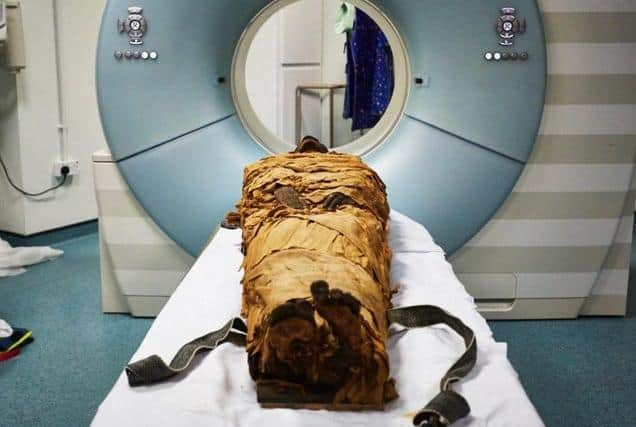Yorkshire archaeologists who made Egyptian mummy 'talk' to discuss how they did it in online lecture
The remains of Nesyamun, a priest, incense bearer and scribe at the time of Ramesses XI, have been held at Leeds City Museum since 1823.Last year experts were able to recreate the mummy’s voicebox using CT scans and 3D technology.
Their work, the first of its kind in the world, produced vowel sounds for the first time in millenia. Now, in an open lecture, Dr Stephen Buckley, a research fellow at the University of York, and Prof David Howard, from the University of London, will discuss their findings and how a vowel might sound compared to the voice of modern- day man.
Advertisement
Hide AdAdvertisement
Hide AdNesyamun died in his mid-50s, around 1100 BC. The mummy had severely worn, protruding teeth which will also impact on the way he talked and, unusually for an Egyptian mummy, his tongue still protrudes.


His remains were well preserved, as a result of the mummification process, with his larynx and throat intact.
One of the most remarkable mummies in Britain, Nesyamun's coffins are amongst the best researched of their kind already leading to a greater understanding of the nature of his role as a priest.
He also survived Hitler's Luftwaffe which destroyed other mummies and half of the museum but left him virtually unscathed in the Leeds blitz bombing of 1941.
The online event, on April 20, is to be hosted by the University of York’s languages department from 6.30pm and is open to the public to book.